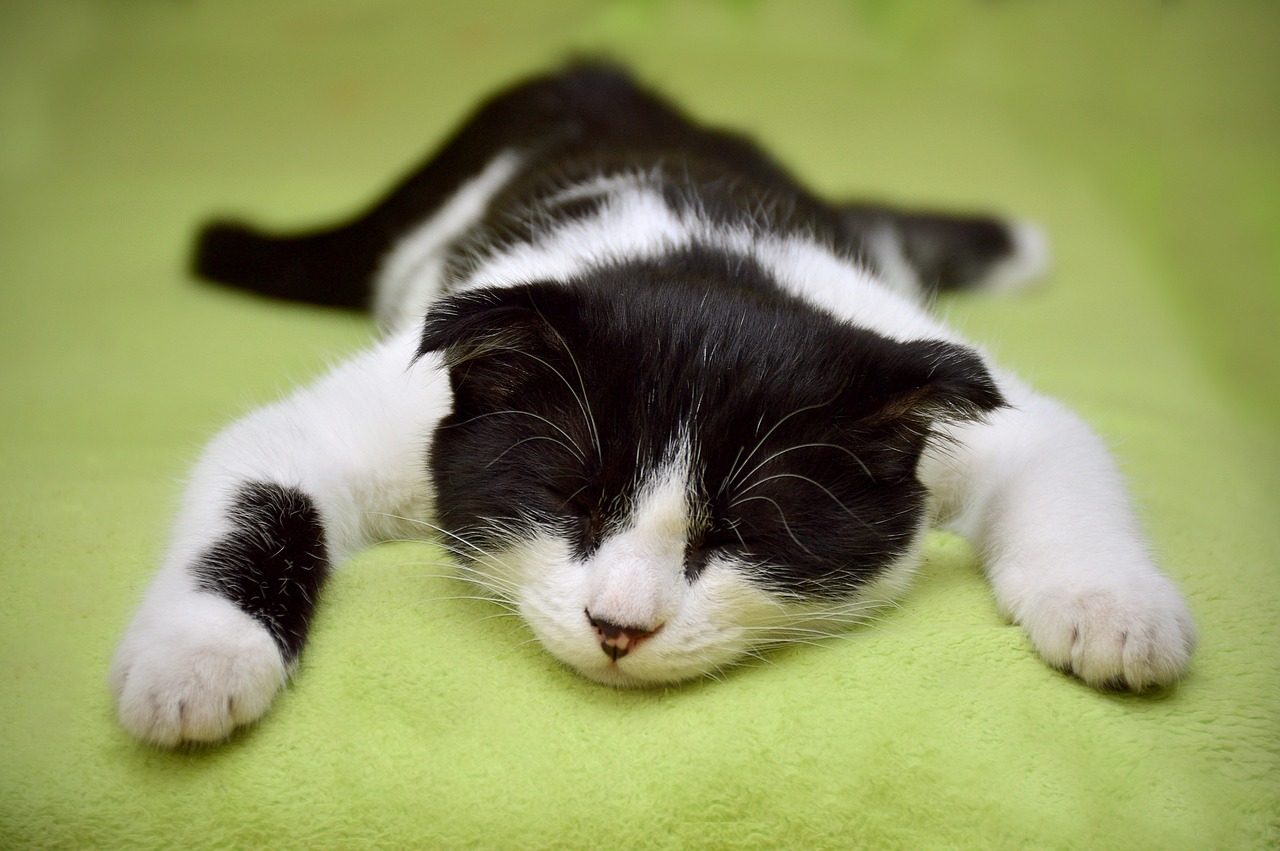Detecting a cat fever can be a source of concern for pet owners, particularly when the normal temperature range is uncertain. The question of “How to tell if my cat has a fever without a thermometer” is frequently asked by cat parents who may not have access to a thermometer or are unsure about the standard feline temperature.
Identifying cat fever symptoms becomes important in such situations. Without the aid of a thermometer, it is essential to pay attention to specific signs that may tell your cat is experiencing a fever and a rise in body temperature.
How do I tell if my cat has a fever without a Thermometer?
Here are some ways for cat parents to check the temperature of their cat without a thermometer.
- Dryness of nose
- Hot ears
- Fast Breathing
- Voice alterations
- Lower level of activity
- Hiding frequently
- Anorexia (Loss of appetite)
1. Examine the nose
Examining your cat’s nose is a primary step in assessing whether your cat may have a fever. Normally, cats, like many other domestic animals, maintain consistently moist noses. However, illness can lead to a dry nose with a subtle increase in warmth.
It’s important to be aware that dryness of the nose can also result from dehydration. To distinguish between dehydration and a fever-related dry nose, employing the skin-twitching method is valuable. If your cat’s back hairs and skin do not promptly return to their normal position, it could indicate dehydration rather than a fever. This distinction is essential for accurate assessment. Because both conditions are treated in different ways.
2. Hot ears
Another area to focus on when assessing your cat’s temperature is their ears. Gently feeling your cat’s ears with your fingertips can reveal elevated warmth, just like checking a person’s forehead for a fever. This tactile method allows you to gauge whether your cat is experiencing an increase in temperature.
For a more precise assessment, you can use your lips to detect any abnormal warmth at the tips of your cat’s ears. Since lips are more sensitive than fingertips, this approach can provide a finer sensitivity to changes in temperature. Ensure you delicately place about half an inch of the cat’s ears between your lips for a more accurate determination of a feverish condition.
3. Fast breathing
Monitoring your cat’s respiratory rate is another valuable indicator of potential cat fever. An increase in body temperature can lead to a higher respiratory rate in cats. Therefore, paying attention to your cat’s breathing patterns can aid in recognizing an increase in its temperature.
Elevated temperatures may manifest as faster breathing, potentially leading to panting in your furry companion. If you observe accelerated breathing, it is an indication that your pet may be experiencing a fever, which can subsequently elevate the heart rate as well.
4. Voice alteration
Cats are noisy in the sense of expressing themselves through different sounds. But they become silent and calm whenever they have a fever. In normal circumstances, a cat may spend hours in continuous meowing and shouting. This is something every cat parent should be aware of.
5. They have a lower level of activity
As a cat parent, you are likely familiar with your cat’s typical sleeping habits and periodic bursts of activity for eating, playing, and exploring their surroundings. However, when a cat is unwell and experiencing a fever, you may notice a significant change in its behaviour. A cat with a fever tends to remain lethargic, showing little desire to move or engage in normal activities. They may appear frail and exhibit signs of depression.
To assess your cat’s well-being, try using their favourite toys or items that typically excite them. For instance, tossing their beloved ball for them to chase. If your cat shows little to no interest in engaging with these stimuli, it could indicate illness, reinforcing the need for further attention and evaluation.
6. Hiding
Cats typically seek out quiet and calm spaces, such as under the table or behind the bed, for relaxation and solitude. If you observe your cat spending more time than usual in these areas, it could be an indication of sickness. Additionally, they may choose hiding spots where they won’t easily return on their own.
A notable change in behaviour is the avoidance of human interaction. If your cat becomes more reclusive and shows a reluctance to engage with you or other family members, it may suggest an underlying health issue. Monitoring changes in your cat’s preferred locations and social interactions can offer valuable insights into their well-being.
7. Sick cats don’t want to eat anything
Anorexia, or the loss of appetite, is a common symptom associated with various illnesses, including fever. Monitoring your cat’s eating habits can provide valuable insights into their overall health. You can assess the degree of anorexia by observing the amount of food left in your cat’s dish after a meal. Cats may reject even their favourite foods in the presence of a high temperature.
It is very important to note that cats can also avoid drinking water when they are feeling unwell. As a responsible cat parent, it’s important to make efforts to encourage your cat to drink water. Adequate hydration is essential to keep your cat well-hydrated, especially in feverish conditions. Paying attention to both eating and drinking behaviours helps in gauging the severity of the illness and informs decisions about seeking veterinary care.
ALSO READ: Why My Cat Start Peeing In The House
Causes of fever in cats
Understanding the potential causes of your cat’s illness is important for effective care. Firstly, it is important to note that cat fever, also known as controlled hyperthermia, is regulated by the Hypothalamus, a part of the brain responsible for controlling the body’s thermostat. Fever occurs when the body temperature rises from this set point, serving as a response from the immune system triggered by various circumstances, such as infections.
In cats, fever can be attributed to both viral and bacterial diseases, including conditions like Feline Distemper and Leukemia. Tumours can also lead to fluctuations in body temperature, although they are more commonly found in older cats. Fungal infections, as well as colds or flu, can contribute to elevated temperatures. Additionally, various diseases such as pancreatitis and lupus have the potential to cause fever in your feline companion. Recognizing these potential causes is essential for accurate diagnosis and appropriate veterinary care.
How to care for a cat suffering from fever
Once you have identified that your cat is experiencing a fever, prompt action is important. Fever can lead to dehydration in cats, so it is essential to offer water, even though your cat may be reluctant to drink due to the effects of the fever.
Avoid attempting self-medication for your cat, as human medications can be harmful to pets. Instead, allow your cat to rest, providing it with the necessary conditions to regain energy and cope with the underlying issue. Mild fevers in cats often resolve on their own within one to two days.
However, if your cat’s fever exceeds 104 degrees Fahrenheit or persists for more than 24 hours, it is imperative to consult a vet immediately. Your veterinarian will gather a complete history of your cat and may conduct tests if necessary to determine the root cause of the fever.
The vet will then prescribe medication based on the situation, and it is important to follow their instructions and complete the entire course of treatment. If dehydration is a concern, your vet may recommend supportive therapy to address this issue alongside the fever.
Final thoughts
Signs and symptoms of fever in cats have so much resemblance to people. So it must not be a difficult task to determine if your cat has a temperature without a thermometer.
Whenever you notice the changes in behaviour of your cat such as decreased activity levels and anorexic conditions, it is important to check its temperature to determine any sickness.
Once cat parents come to know about the illness of their pet child, they should pay extra attention to their pets. Remember if your cat’s temperature reaches above 104 degrees, consider it a medical emergency and approach your vet as soon as possible.
Frequent Asked Questions
Observing your cat’s behaviour and physical signs can help determine if they have a fever. Look for symptoms such as lethargy, loss of appetite, rapid breathing, warm ears and a dry or warm nose.
A feverish cat may become less active, avoid playtime, and seek out cool spots to lie down peacefully. They might also groom themselves excessively or show signs of discomfort when touched.
While a warm or dry nose is often associated with fever, it’s not a definitive indicator. Cats’ noses can vary in temperature throughout the day. Instead, consider a combination of signs like lethargy, appetite changes, and breathing rate to know the situation more precisely.
Yes, you can check for warmth in their ears and their paw pads. If these areas feel unusually hot, it could suggest a fever. However, this method isn’t always precise and should be considered alongside other symptoms.
Monitoring your cat’s appetite is very important. A significant decrease in food intake can indicate illness, including fever. If your cat refuses food for more than 24 hours, consult a veterinarian.



